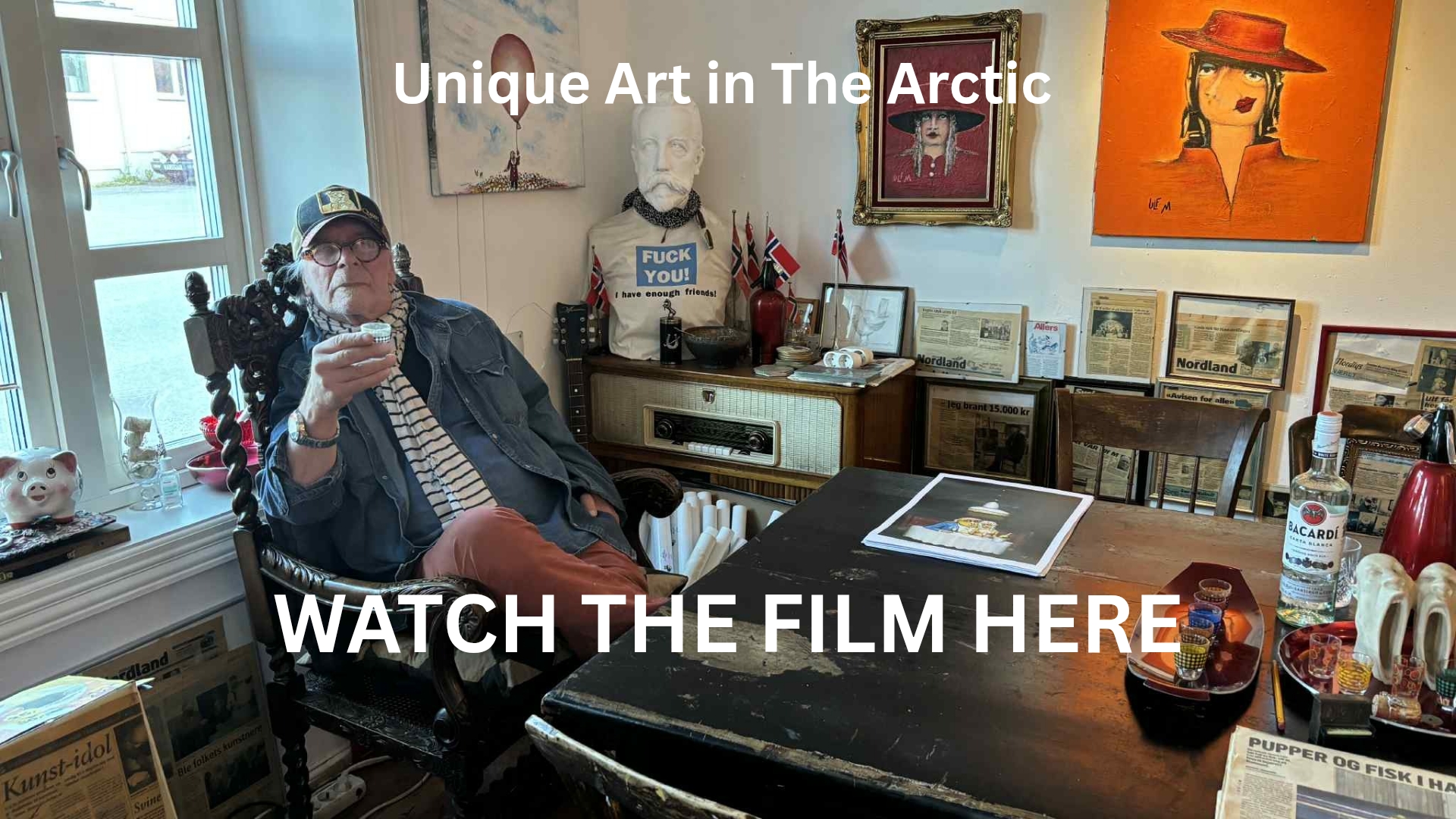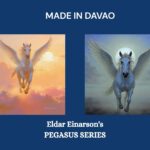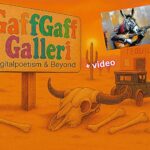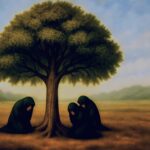Be prepared to jump almost 20 years back in time.

In December 2005, an unusual painting exhibition opened at a gallery in Bodø, an important cultural hub in the Norwegian Arctic.

A series of paintings made people stop and wonder. Melancholic men with unusually long necks drowned their sorrows in wine, while women with suitcases headed toward brighter days. It was something entirely new and unexpected.

The man behind the paintings was my cousin, Ulf Steinar Melkstavik. I hadn’t heard from him in ages, but suddenly I was invited to the opening of his first solo exhibition in the largest city in Northern Norway.
We were both born in 1947 and first met in 1948, in his birth town, Trondheim. Here’s a photo from that occasion:

On the left, you see Ulf M wearing a beret, his older sister Tove, and me with a hat. This is one of the few photos I have of us together. Over the years, we had only sporadic contact, yet we always maintained a good relationship.
I accepted the invitation and brought along a Sony DVCAM 170, thinking this might become the beginning of a small TV film about him.

Three years earlier, his long-time partner had left him, and not long after, he found himself in serious conflict with the tax authorities. What fascinated me was that, at the age of 55, he left Oslo and moved to a small fishing village in the Arctic to become a full-time painter.

That he chose to commit entirely to painting made perfect sense. Drawing and painting had been part of his life since childhood. His creative passion followed him through an education in advertising. Along the way, he also worked as a ski instructor at a mountain resort, created humorous radio segments, starred in two TV films, and even ventured into the fashion business with a distinctive flair that drew attention.
His women’s clothing store, “The Fly,” in Oslo became legendary for its entrance sign: The Fly is Open. He also ran a men’s store called Herrover — “This Way, Gents” — a playful mix of “Herr” (gentleman) and “Come here.”
When he conceived the idea of launching himself as a recording artist, he took on too much. Driven by heartbreak, he wrote lyrics, composed melodies, rented a studio, and recruited musicians. At the same time, he opened a shop specializing in ultra-sturdy wine glasses from Iran, without checking if there was a market for them. His enthusiasm for Iranian glass art wasn’t enough to keep the project afloat.
When the tax authorities came after him in 2002, he suddenly found himself with nothing. Everything he owned fit into two suitcases. With the idea of finding a cheap atelier as far from Oslo as possible, he headed north to the Lofoten Islands.

When I arrived in Bodø in December 2005, he had already established a reputation in the region.

Having an exhibition in the largest city in Northern Norway was a significant achievement. But life wasn’t easy.
In the film, I follow him on and off over the course of four years and include some of the songs he wrote to help tell the story. The combination of text and music creates a playful, sentimental tone. Along with his deep conviction that he would one day be recognized worldwide, a profoundly human dimension emerges — one many of us can identify with.
By 2008, he was selling well locally, and true to himself, he went all in. He caught the interest of a gallery in New York and set off to try his luck in the world’s toughest art market, with me and my camera in tow.

Here are two articles presenting Ulf M: GaffGaff Galleri and Meet Ulf M: An Outsider in Stamsund (Part 1)
My wife, Grace, has also written a background story here.
The film was never finished, and I’m showing it here as I found it on an old hard drive some years ago. It’s too endearing to be completely forgotten. The Norwegian poet and author, Erling Kittelsen, says about the film: “Beautiful and intense, wonderful and intricate, funny and warm.”
Prepare for some playful kitsch, astonishing art, and tender recognition. Enjoy!
Featured image © Kenneth Grav, texts on the image by Eldar Einarson






